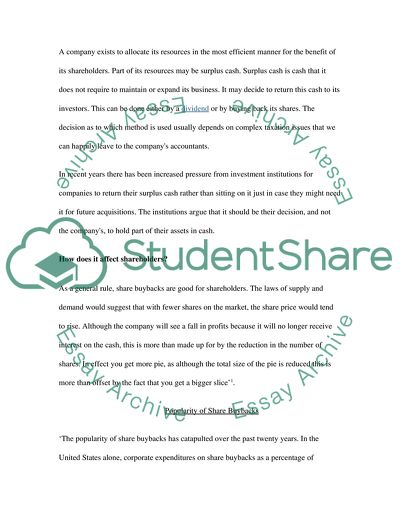Cite this document
(Are Share Buybacks a Matter of Substance or a Fashion Essay Example | Topics and Well Written Essays - 1750 words, n.d.)
Are Share Buybacks a Matter of Substance or a Fashion Essay Example | Topics and Well Written Essays - 1750 words. https://studentshare.org/finance-accounting/1542942-are-share-buybacks-a-matter-of-substance-or-a-fashion
Are Share Buybacks a Matter of Substance or a Fashion Essay Example | Topics and Well Written Essays - 1750 words. https://studentshare.org/finance-accounting/1542942-are-share-buybacks-a-matter-of-substance-or-a-fashion
(Are Share Buybacks a Matter of Substance or a Fashion Essay Example | Topics and Well Written Essays - 1750 Words)
Are Share Buybacks a Matter of Substance or a Fashion Essay Example | Topics and Well Written Essays - 1750 Words. https://studentshare.org/finance-accounting/1542942-are-share-buybacks-a-matter-of-substance-or-a-fashion.
Are Share Buybacks a Matter of Substance or a Fashion Essay Example | Topics and Well Written Essays - 1750 Words. https://studentshare.org/finance-accounting/1542942-are-share-buybacks-a-matter-of-substance-or-a-fashion.
“Are Share Buybacks a Matter of Substance or a Fashion Essay Example | Topics and Well Written Essays - 1750 Words”. https://studentshare.org/finance-accounting/1542942-are-share-buybacks-a-matter-of-substance-or-a-fashion.


